
Yes...
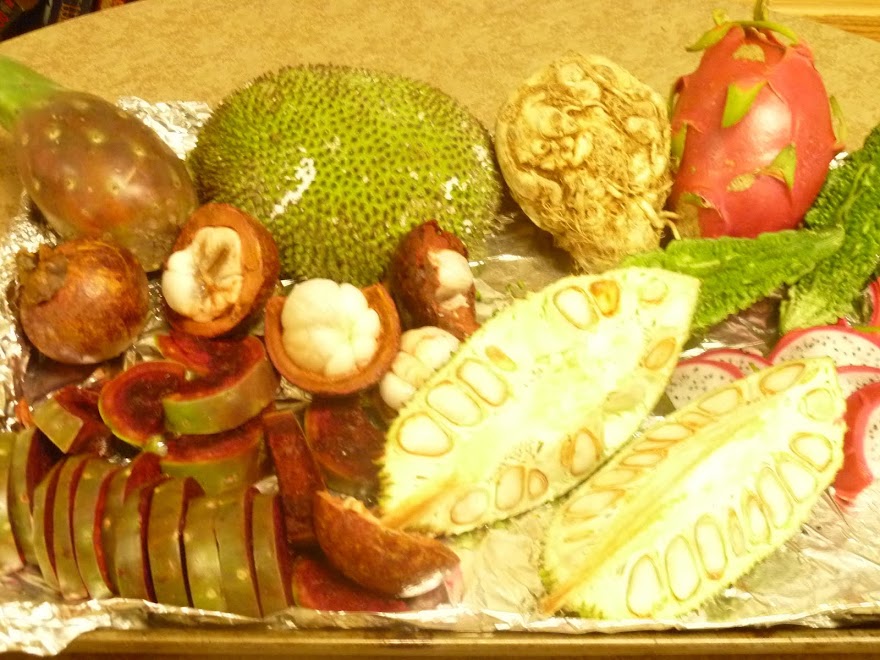
Qapla! (Success!)... In her youth Aperokei was a warrior as many Klingons are, both male and female, but as she grew older she found the noble profession of gardener. Many other peoples think that Klingons don't eat vegetables and fruits, but they do, for lack of such foods in one's diet can lead to bodily impaction which is very detrimental to the health and vigor of a Klingon!!!
Saturday, December 15, 2018
Friday, December 14, 2018
Tuesday, October 2, 2018
Monday, July 30, 2018
KLINGON ANIMALS, #8, --- The ngem veqlargh...

This lizard-like creature, also called a brush devil, lives in the Central Plains of the Klingon homeworld Qo'noS.
The Central Plains is a stretch of wild country which serves as a natural buffer between the Kannaga and Tlhlngtu Mountain ranges. It's a frontier with no cities, only small villages. The living there is simple with farming, hunting and fishing being the way people get along. Bands of rogue marauders and bandits can roam between the settlements. Many a hardened and seasoned warrior has chosen the Central Plains as his place of retirement.
Sunday, July 29, 2018
Saturday, July 28, 2018
Friday, July 27, 2018
Thursday, July 26, 2018
Wednesday, July 25, 2018
Some Star Trek Animals, --- Those Ultra-Weird Critters From Otherworlds...
Cardassian vole

The Cardassian vole is a fictional rodent species in the series Star Trek: Deep Space Nine. It was a vicious pest aboard the space station, infesting Quark's Bar as well as Ops where it chewed through wiring. It is quite unlike the voles of Earth, most notably in that it has six legs. It is also much bigger than a terrestrial vole.
Although he has denied it, Quark hosts vole fights. Morn has been known to assist him in setting up the events by painting numbers on the voles' backs.
Ceti eel

The Ceti eel appears in the 1982 film Star Trek II: The Wrath of Khan. It is the only indigenous lifeform of Ceti Alpha V known to have survived after Ceti Alpha VIexploded and sent Ceti Alpha V into a different orbit. Ceti eels incubate their larvae between protective plates that line their backs. The slime-covered larva will seek out a larger animal, enter its skull through the ear and wrap itself around the cerebral cortex. This causes the subject intense pain and makes them susceptible to suggestion. As the larva grows, the host suffers from insanity and eventual death. Ceti eels bear a remarkable resemblance to antlion larvae.
Khan Noonien Singh and his followers were marooned on this planet by James T. Kirk. Khan's wife, Marla McGivers, was killed after becoming a host for one of these creatures. Twenty more of Khan's people were killed in the same fashion, forming the basis for Khan's vendetta against Kirk. In the film, Captain Clark Terrell and Commander Pavel Chekov were captured by Khan while conducting a close-range sensor scan on the planet. Khan put the larvae into their helmets, where the creatures crawled into the men’s ears and subsequently burrowed into their brains. Terrell later killed himself, but Chekov's larva exited his ear and was disintegrated by a phaser-blast from Admiral Kirk's phaser.
In popular culture, the Ceti eel is widely considered a terrifying creature.
The 2009 reboot Star Trek film introduces "Centaurian slugs" with a similar appearance and function, as an homage.
A 2011 episode of Supernatural ("...And Then There Were None") showed a creature that took over the minds of people by burrowing into their heads in the same way as Ceti eels. The character Dean Winchester dubbed the creature the "Khan Worm".
Regulan bloodworm
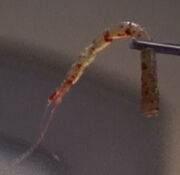
The Regulan bloodworm is a worm-like lifeform, native to the planet Regulus II. It is described as a soft, spineless creature that is medically useful for cleaning the lymphatic system; however, Regulan bloodworms can also infect sentient races, causing sickness and death.
The first reference to Regulan bloodworms was as an insult in the Star Trek episode "The Trouble With Tribbles," written by David Gerrold. Gerrold also wrote an episode for Star Trek: The Next Generation, tentatively titled "Blood and Fire", in which the Enterprise's crew comes across a derelict ship with a dead crew, all killed by a Regulan bloodworm infestation. The episode, which was meant to introduce a science-fiction analogue for the AIDS pandemic of the 1980s, was never produced, but a modified version was produced in the web series Star Trek: Phase II.
This two-part episode (4x04 and 4x05, released in 2008) was also entitled "Blood and Fire". In it, the Enterprise crew attempts to rescue members of a federation vessel who unknown to them has violated a 100-year quarantine on visits to the Regulus system, and subsequently were contaminated by a deadly plague of "doomsday" Regulan bloodworms. In this episode, the creatures are seen as a universal threat to not only the Federation but also to the Klingon Empire as well. They are exposed as having been created by the Regulan civilization as a doomsday weapon, which resulted in the extinction of all life in the system. As it turns out, the covert operation of the Federation research vessel, led by an over-zealous Federation scientist, was actually designed to unleash the creatures on the Klingon Empire, causing mass genocide, while the Federation would be protected by a newly discovered cure for the infection. The analogy to the HIV virus and AIDS remains as two of the primary characters are males who were in love and had plans to marry. One, the nephew of Captain Kirk, Peter Kirk, narrowly escapes, but his husband-to-be, Alex Freeman, dies as the bloodworms attack.
The medical use of Regulan bloodworms was suggested or carried out by Doctor Phlox in the episodes "Two Days and Two Nights", "Stratagem" and "Doctor's Orders" of Star Trek: Enterprise. Illustrations of the creatures were also featured in the schoolroom and infirmary of Deep Space Nine.
Sehlat
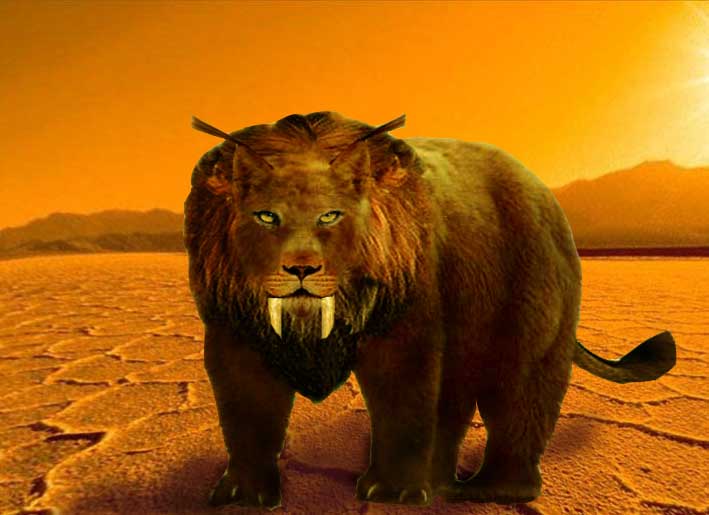
The sehlat is a large carnivore native to Vulcan. Sehlats have six-inch fangs and do not like to climb, preferring to remain on low ground. In 2154, Captain Jonathan Archer and Commander T'Pol were stalked by a wild sehlat in "The Forge".
Domesticated sehlats are a popular pet with Vulcan children. These sehlats are smaller, though not much so, and still quite aggressive: T'Pol, having owned one, notes that Vulcan children learn early never to be late with their sehlat's dinner.
Spock had a pet sehlat named I-Chaya during his youth which originally belonged to his father, Sarek. I-Chaya died in 2237, as a result of injuries inflicted from an attack by a large creature called a le-matya. Spock chose to have his pet euthanized to end its suffering. In the novelization of "Yesteryear" by Alan Dean Foster, it is revealed that sehlats originated in the "rainforests of Vulcan's southern hemisphere."
Targ

The targ (in Klingon language: targh) is a boar-like beast with sharp tusks. It is native to the Klingon homeworld Qo'noS. Klingons both hunt the animal for food and keep it as a pet.
In the Star Trek: The Next Generation episode "Where No One Has Gone Before" Lt. Worf saw his pet targ in a vision.
Tribble
The Tribble is a small, soft, furry creature which reproduces rapidly. Tribbles were first shown in an episode of the second season of the original series, "The Trouble With Tribbles" (1967). They have appeared in several subsequent series, as well as in a number of Star Trek feature films, and in video games such as Star Trek: Armada II.
According to Star Trek canon, tribbles are native to the planet Iota Geminorum IV. They appear as small bundles of fur with no other visible features. Their coloring ranges from white and grey to black, as well as speckled brown, yellow and orange. According to Dr. Leonard McCoy's dialogue, their only two purposes in life appear to be to eat and to reproduce, and they perform both of these functions exceptionally well. McCoy concludes that tribbles use over 50% of their metabolism for reproduction and that they are born pregnant.
Due to their tendency to over-populate, Starfleet considers tribbles to be dangerous organisms and forbids their transportation. A creature genetically engineered to hunt tribbles was introduced in the animated episode "More Tribbles, More Troubles" (1973). The Klingons, in whose presence tribbles produce a convulsive, shrieking reaction, consider them "mortal enemies", as stated in the Star Trek: Deep Space Nine episode "Trials and Tribble-ations" (1996).
Tuesday, July 24, 2018
KLINGON ANIMALS #7, --- The Sargh...
The sargh is a swift Klingon horse-like creature that runs wild in the more mountainous parts of Oo'noS, esspecially on Kang's Summit and in the Tlhlngtuj Mountains of Ketha Province where it's foals have to beware of the saber bear and klongats. However, with pointed teeth, unlike the Terran horse's teeth and razor-sharp hooves, the sargh is far from defenseless. It's not very large even at maturity, and hard to tame although it can and has been done; many Klingons wonder why [???].


The Boreth Monastery...
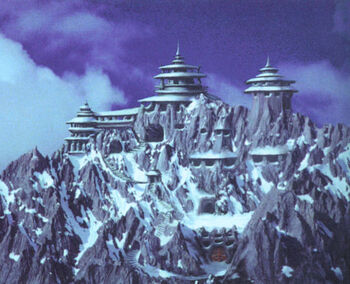
Shortly before his death, Kahless The Unforgettable pointed to a star over Qo'noS and said that he would return to that place someday. The Klingons later came to Boreth which orbited that star and established the famous monastery there. But, when the Klingon warships first came to Boreth they discovered a small native pre-industrial population numbering about one million. They were called the Jinvana. The Jinvana made no resistance to the Klingons and were used as slave labor to build the monastery. Later, the Jinvana were freed, but some continued to work and live on the monastery grounds. Because of it's high elevation Boreth has bitterly cold winters, but the rest of the year can be quite pleasant. Many exotic, toxic and highly dangerous, even carnivorous plants are grown in the botanical gardens on Boreth.
The clerics at the monastery, seeing the decay in the Klingon society decided to recreate a clone of Kahless using genetic material that had been preserved thorough out centuries. They then programmed the clone with memories from the original Kahless and had him appear to Worf who was on a spiritual retreat to Boreth. Worf felt the clone had an important role to play in rebuilding the Klingon society and proposed naming the clone "Emperor Of The Klingons".
In 2375 Boreth was the site of a battle between forces loyal to Chancellor Martok and those loyal to Gothmara. After Kahless disappeared and was replaced by a holographic projection the monastery on Boreth was contacted to determine if he had returned there. But, Kahless had not been seen by the staff who believed that all records of his cloning had been destroyed in the assault four years earlier and no back ups were made.
The History Of Worf...

Worf's family ties are slowly revealed across several hundred episodes and the movies. An important aspect to understanding Worf is that he was adopted by Federation parents, so he has both adoptive and biological family.
The House of Mogh was a family of high social and political rank which was for a time represented on the Klingon High Council. In Star Trek VI: The Undiscovered Country (set around 70 years before the Next Generation era began), Colonel Worf (also portrayed by Dorn) appears as the legal advocate of Captain James T. Kirk and Dr. Leonard McCoy after they are accused of killing Chancellor Gorkon of the Klingon High Council. He was also a member of the Klingon delegation at Camp Khitomer. Although not explicitly stated, he was intended to be Worf's grandfather.
Worf has a son named Alexander with a half-human half-Klingon woman named K'Ehleyr, a character introduced in "The Emissary", however she is later killed in "Reunion", a "sequel" to that episode and part of the Worf story arc, leaving Worf as a single parent. 
Alexander later has to live aboard Enterprise-D when K'Ehleyr is killed. After TNG ends, Worf gets moved to the Deep Space Nine space station where he eventually marries the Trill symbiont Jadzia Dax. (see "You Are Cordially Invited...") On DS9 Worf misses the Enterprise-D "family" that he had, often bemoaning the cut-rate work ethic and unfriendliness on the wayward outpost.

Alexander later has to live aboard Enterprise-D when K'Ehleyr is killed. After TNG ends, Worf gets moved to the Deep Space Nine space station where he eventually marries the Trill symbiont Jadzia Dax. (see "You Are Cordially Invited...") On DS9 Worf misses the Enterprise-D "family" that he had, often bemoaning the cut-rate work ethic and unfriendliness on the wayward outpost.
The episode "Sins of the Father" introduces Worf's long lost brother Kurn, who is also an orphan of the House of Mogh. His adoptive parents have another son, Nikolai Rozhenko whom Worf grew up with. Nikolai and Worf interact in "Homeward" where it is revealed that Worf will likely have a nephew or niece.
Worf did not take the Rozhenkos' last name, preferring to be addressed by the Klingon designation "Worf, son of Mogh". However, his son Alexander Rozhenko, who was raised by the Rozhenkos after his mother K'Ehleyr died, did use their surname. Although Worf was raised by humans, he considered himself a Klingon at heart and studied the ways of his people. As an adult, his mannerisms and personality, as well as his innate sense of honor, became more Klingon than human.
Worf's brother Kurn, barely a year old at the time of the Khitomer attack, had been left behind on the Klingon homeworld Qo'noS by his parents. Lorgh, a friend to House of Mogh (appearing only in dialog of the episode "Sins of the Father"), was charged with the care of the younger son, originally expecting Mogh's stay at the Khitomer outpost to be short-term. Lorgh adopted Kurn after the attack, but informed Klingon authorities that he had died with the rest of the family. Kurn was not revealed as being alive until both brothers were adults.
In 2357, Worf entered Starfleet Academy. He graduated in 2361 and was commissioned with the rank of Ensign, becoming the first Klingon officer in Starfleet. Although Worf took immense pride and a sense of honor from serving in Starfleet, most other Klingons shunned and belittled his choice of vocation.
Monday, July 23, 2018
A Bit More Of Lwaxana Troi...
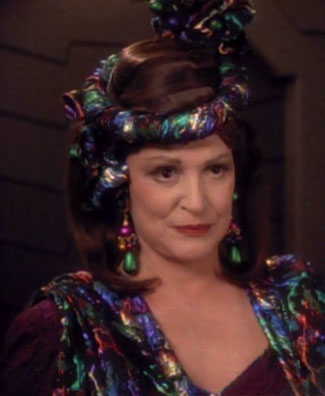
As one of the most colorful figures in Federation diplomacy, the flamboyant, attractive, but quite eccentric Betazoid ambassador Lwaxana Troi has led a life of both excitement and tragedy. Natively, she is of the nobility, a daughter of Betazed's Fifth House, holder of the sacred Chalice of Rixx which, as her daughter Deanna put it is, --- "an old clay pot filled with mold," and heir to the Holy Rings of Betazed, Lwaxana's life has been marked by a succession of romances and marriages, her first being to a good friend of fellow Betazoid diplomat Rheittan Grax. She actually bore a son with the latest, to the Tavnian Jeyal, but faked a second lover to escape the marriage and the Tavnian child-rearing custom of separation of genders.
By far it was her marriage to the human Starfleet Lt. Comdr. Ian Andrew Troi in 2328 that was most rewarding and stable, with the birth of a daughter Kestra a year later and the birth of a second daughter, Deanna, in 2336. But Kestra accidentally drowned later that year, and Lwaxana's terrible grief over it drove her to delete all memory of her from her personal writings and then from her Betazed metaconscious as well. When her husband died in 2343, Lwaxana took on a wild, flirtatious lifestyle that masked her pain while increasingly annoying and isolating her daughter, whom she also over-protected, continually calling her "Little One," an affection name Lwaxana used for Deanna when she was five years old . Before Ian's death, her parents had Deanna genetically bonded in the Betazoid arranged marriage process to a human boy Wyatt Miller, but a reunion among the families in 2364 found her feuding with Mrs. Miller well before the wedding was called off.
To her adult daughter's eternal embarrassment, Lwaxana has flirted and chased after Deanna's commander and one-time lover, elegant Jean-Luc Picard and ruggedly handsome Will Riker -- especially during her time of Betazoid quadrupled sex drive known as "The Phase," a type of pre-Menopause thing, in 2365 -- but they were only two of her failed romances. Aside from falling for a charming holographic bartender, some of her interests over the years included Kaelon IV scientist Dr. Timicin, a sight-unseen engagement to Minister Campio of Kostolain and another one that led her on the rebound to Jeyal. Although later affairs were piqued by mutual interest, she admitted that some were prompted by a fear of aging and loneliness. She was attracted to Deep Space Nine's Chief Of Security, the changeling Odo. Shy and social awkward Odo mildly returned her affection, but was still mortified by it. And, Lwaxana teased the stoic Klingon Worf mercilessly, even calling him "Woof".
To Lwaxana's credit, she did expose an Antedian terrorist bombing while an ambassador to the Pacifica Conference in 2365, and even helped outwit the lustful Ferengi, DaiMon Tog, who desired and then kidnapped her, Deanna and Riker in 2366. [Captain Jean-Luc Picard hilariously "saved" Lwaxana, but romantically quoting Shakespeare.] She had a sister whom she outlived, and was served much of her later lifetime by a very tall mostly mute servant, Mr. Homn, who greatly enjoyed all forms of alcoholic drinks, including Romulan ale. He was unknown to Deanna, who was more familiar with his predecessor Mr. Xelo, who was dismissed for his misplaced flirtations with Lwaxana.
Some Star Trek features with the irrepressible Lwaxana are:
Star Trek: The New Generation episodes ---
"Haven"
"Manhunt"
"Menage a Troi"
"Half A Life"
"Cost Of Living"
"Dark Page"
Star Trek; Deep Space 9 episodes ---
"The Forsaken"
"Fascination"
"The Muse"
Star Trek: Deep Space 9 Comics ---
"Lwaxana Troi & The Wedding Of Doom"
"Four Funerals & A Wedding"
Star Trek: Tales Of The Dominion War, short story, --- "The Ceremony Of Innocence Is Drowned"
Star Trek: Next Generation novel --- "The Battle Of Betazed"
Star Trek: "The Brave & The Bold, Book 2, novella, --- "The Final Artifact"
Star Trek: The New Generation episodes ---
"Haven"
"Manhunt"
"Menage a Troi"
"Half A Life"
"Cost Of Living"
"Dark Page"
Star Trek; Deep Space 9 episodes ---
"The Forsaken"
"Fascination"
"The Muse"
Star Trek: Deep Space 9 Comics ---
"Lwaxana Troi & The Wedding Of Doom"
"Four Funerals & A Wedding"
Star Trek: Tales Of The Dominion War, short story, --- "The Ceremony Of Innocence Is Drowned"
Star Trek: Next Generation novel --- "The Battle Of Betazed"
Star Trek: "The Brave & The Bold, Book 2, novella, --- "The Final Artifact"
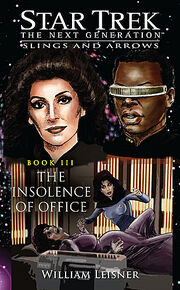
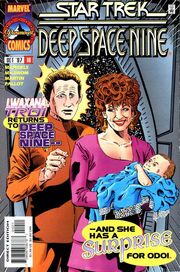
Marvel comic, Deep Space Nine#10, Lwaxana Troi and Odo
Sunday, July 22, 2018
"I Desire You, Lwaxana Troi!!!," --- Star Trek: The Next Generation...
This was such a funny episode... :D :D :D
Deanna Troi Argues With Her Mother, --- Star Trek: The Next Generation...
Lwaxana Troi is hilarious!!!... I search out episodes with her in them.
Saturday, July 21, 2018
Data's Cat Spot Compilation, All Appearances, --- [Data just loves his kitty!!!] =^_^=
I don't think Worf is a cat lover, --- but HE IS a good guy. ;)
Friday, July 20, 2018
5 Life Lessons Taught by Garak in Star Trek: DS9...
I can't help but like Garak the sly and charming Cardassian spy-tailor.
The Materialistic Ferengi Culture, --- [Do you HAVE the lobes???]...

The Ferengi originate from the planet Ferenginar, in the center of the Ferengi Alliance located in the Alpha Quadrant. Precisely what the Ferengi Alliance consisted of was never revealed; it may simply encompass Ferenginar and any uninhabited planets that the Ferengi have colonized since there was little indication that the Ferengi government exercised authority over any species other than its own.
It rains continually on Ferenginar so that Ferengi homes always have entryways where folks can shake off the water. Quark and Rom have said when they are away from home they miss the smell of rotting vegetation, mold and mildew.
It rains continually on Ferenginar so that Ferengi homes always have entryways where folks can shake off the water. Quark and Rom have said when they are away from home they miss the smell of rotting vegetation, mold and mildew.
The Two Hundred Eighty-Five Ferengi Rules of Acquisition compose the sacred code on which all their society is based. The rules were written down by Gint, the first Grand Nagus (the title of the leader of the Ferengi Alliance). The title "Rules of Acquisition" was chosen as a clever marketing ploy (since the rules are almost universally considered to be merely guidelines by Ferengi and subject to very loose interpretation depending on the situation) and Gint numbered his first rule one hundred sixty-two to create a demand for the other one hundred sixty-one Rules that had not yet been created.
Ferengi culture is so devoted to unregulated capitalism that concepts such as labor unions, sick leave, vacations, or paid overtime for workers are considered abhorrent, because they would interfere with the honored Ferengi custom of the exploitation of workers. Ferengi workers don't particularly mind this system, because they all want to eventually gather enough wealth to become employers themselves, delightfully exploiting their own workers, thus perpetuating the cycle. In addition to the Rules, the Ferengi also recognize the five Stages of Acquisition: infatuation, justification, appropriation, obsession, and resale. The five Stages of Acquisition may be based on the five stages of grief.
Until the episodes "Ferengi Love Songs" and "Profit and Lace", the laws and society of the Ferengi were extremely harsh towards its women. Selling one's mother for gold-pressed latinum, the principal form of legal tender among Ferengi, is an act that would be looked on with admiration in Ferengi society. Moreover, female Ferengi were forbidden to learn to read, acquire profit, talk to strangers, or even wear clothes. They could only leave the house with the permission of the eldest, most senior male of the family. Ferengi women traditionally softened food for members of their family by chewing it, though not all females did this. The rules regarding females were not always followed by Ferengi women; Ishka, Quark's intelligent and sweet mother, regularly wore clothes and elegant jewelry, boldly talked to strangers and even engaged in business on the sly, and it is unlikely that she was the only rule-violator. Female Ferengi gained the legal right to wear clothing and so leave the house in "Profit and Lace".
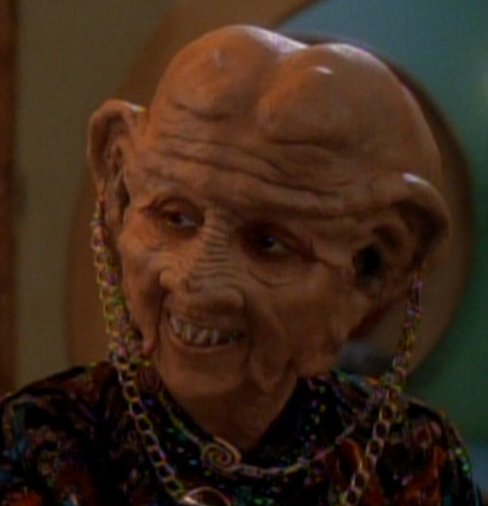
By the time of Deep Space Nine's penultimate series episode, "The Dogs of War", it was indicated that Ferengi capitalism was coming under greater regulation, with historic changes towards left-wing politics and policies being made with respect to things such as universal health care and workers' rights, etc. Zek's appointment of Rom to be his successor as Grand Nagus suggests that this trend will likely continue, given that Rom was long depicted as much more liberal, compassionate, sensitive and cheerful than more the more traditional, dogmatic and greedy Ferengi such as Quark.

By the time of Deep Space Nine's penultimate series episode, "The Dogs of War", it was indicated that Ferengi capitalism was coming under greater regulation, with historic changes towards left-wing politics and policies being made with respect to things such as universal health care and workers' rights, etc. Zek's appointment of Rom to be his successor as Grand Nagus suggests that this trend will likely continue, given that Rom was long depicted as much more liberal, compassionate, sensitive and cheerful than more the more traditional, dogmatic and greedy Ferengi such as Quark.
Noteworthy Ferengi males are neither buried nor cremated when they die. Rather, the dying male puts his body up for auction to the highest bidder and the dead body is carved up into little pieces that are vacuum-desiccated, preserved and packaged for sale as mementos of a worthy life. In one DS9 episode, Constable Odo expresses an interest, when the time comes, in buying Quark's remains. In another episode, Quark, faced with the eventuality of death on a far-off planet laments that his carcass will remain unmourned and, thus, --- embarrassingly "unsold".
A subset of the Ferengi culture are known as Eliminators, and they routinely hire themselves out as assassins to anyone willing to pay for their services. Most Ferengi, however, view the Eliminators as eccentric at best, since Eliminators appear to enjoy the sport of killing more than the profits gained thereby, or downright dangerous psychopaths at worst who kill potential customers, which is not at all good for business, and avoid them whenever possible.
An important component of Ferengi cuisine appears to be insects and other small invertebrates. Some, such as tube grubs and gree worms, are nearly always served alive like the Klingon dish gagh, while others are served jellied or in a juice form. Unlike how humans are repulsed at the idea of eating Klingon gach, Quark has been observed eating gagh on several occasions, though commenting that he thinks it tastes bland and boring. Popular beverages include Eelwasser and Slug-O-Cola ("The slimiest drink in the galaxy"). The cuisine of the Ferengi has achieved little acceptance among other cultures, with a few notable exceptions. Ferengi invented the alcohol substitute synthehol, and the alcoholic drink "black hole" is popular among some non-Ferengi.
Outside of Ferenginar, many Ferengi enjoy the food of other cultures in addition to traditional Ferengi cuisine and have integrated it into their menus. However, most Ferengi have a particular distaste for Terran food. In several episodes of DS9, Quark expresses his extreme distaste for the popular Terran soft drink root beer, which he describes as "so bubbly, cloying, and happy, just like the Federation."

When welcoming guests or perhaps Liquidators or other officials in particular into his home, a Ferengi male will recite a traditional greeting: 'Welcome to our home. Please place your thumbprint on the legal waivers and deposit your admission fee in the slot by the door. Remember, my house is my house." The guest replies, "As are its contents". The notion that everything, even traditional hospitality, is for sale on Ferenginar is shown elsewhere: in the Tower of Commerce, an elevator ride is extortionately expensive; even the waiting room chairs cost three slips of latinum to use and standing is one slip.

When welcoming guests or perhaps Liquidators or other officials in particular into his home, a Ferengi male will recite a traditional greeting: 'Welcome to our home. Please place your thumbprint on the legal waivers and deposit your admission fee in the slot by the door. Remember, my house is my house." The guest replies, "As are its contents". The notion that everything, even traditional hospitality, is for sale on Ferenginar is shown elsewhere: in the Tower of Commerce, an elevator ride is extortionately expensive; even the waiting room chairs cost three slips of latinum to use and standing is one slip.
A certain branch of Ferengi government known as the Ferengi Commerce Authority, and especially its agents, known as Liquidators, is almost universally loathed by all Ferengi; it is possibly meant as a parody of the Internal Revenue Service. Liquidator Brunt was a recurring character on Deep Space Nine who often found himself at odds with Quark.
A notable Ferengi pastime is the strategic game Tongo, played with cards and a roulette wheel. At each turn the player has the choice to "evade", "confront", "acquire", or "retreat". A Global Tongo Championship is held each year on Ferenginar. Another Ferengi game using a similar wheel is Dabo. About ten players can sit around the dabo wheel, and each either "buys", "sells" or "converts" their gold-pressed latinum (money) in preparation for the next spin of the wheel. Proprietors who house dabo games in their establishments often employ attractive women (colloquially, "dabo girls") to run the games, entice customers to play and distract their attention.
Subscribe to:
Posts (Atom)


